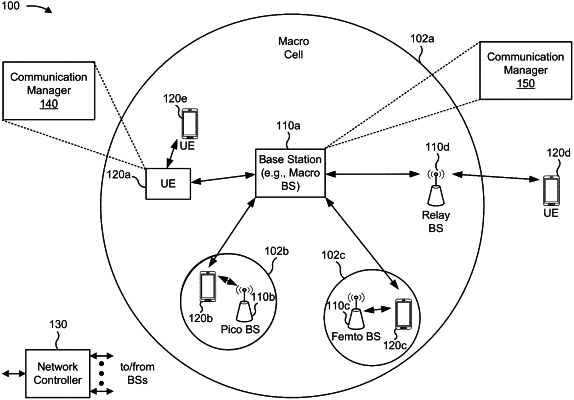| CPC H04L 5/0012 (2013.01) [H04L 5/0051 (2013.01); H04L 27/26025 (2021.01); H04W 72/0453 (2013.01); H04W 72/23 (2023.01)] | 30 Claims |

|
1. A user equipment (UE) for wireless communication, comprising:
one or more memories; and
one or more processors, coupled to the one or more memories, configured to:
determine an amount of time, between uplink allocations that is needed for performing a frequency retuning associated with hopping from a first set of frequency resources to a second set of frequency resources during operation at a subcarrier spacing (SCS), based at least in part on a mapping of the SCS to the amount of time between the uplink allocations that is needed for performing the frequency retuning,
wherein the first set of frequency resources is associated with transmitting a first uplink transmission, and the second set of frequency resources is associated with transmitting-a second uplink transmission, and
wherein the mapping of the SCS to the amount of time between the uplink allocations that is needed for performing the frequency retuning is one of mappings, of SCSs to amounts of time needed for performing the frequency retuning, stored by the UE;
transmit, after determining the amount of time between the uplink allocations that is needed for performing the frequency retuning, the first uplink transmission in the first set of frequency resources;
transmit information indicating a suggested quantity of symbols associated with performing the frequency retuning;
receive, based at least in part on transmitting the suggested quantity of symbols, downlink control information (DCI) indicating a symbol at which to perform the frequency retuning; and
perform, after transmitting the first uplink transmission and at the symbol, the frequency retuning,
wherein the frequency retuning is performed during a set of consecutive unallocated resources determined based at least in part on the amount of time between the uplink allocations that is needed for performing the frequency retuning.
|